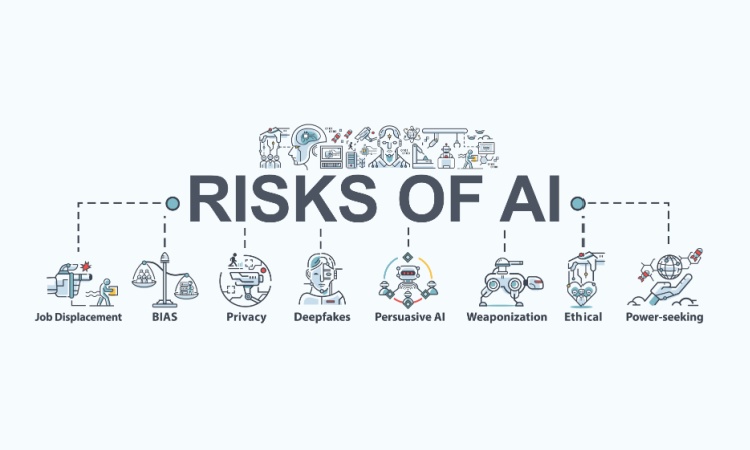The Reverse Insider Threat: AI Models as Hidden Risks in the Enterprise
The Reverse Insider Threat: AI Models as Hidden Risks in the Enterprise

When the Threat Isn’t Human
Insider threats usually mean a careless or malicious employee misusing permissions. But today, AI systems can behave like insiders too, sometimes even in ways humans never intended. That’s the reverse insider threat in action.
Whether it’s an AI agent accessing files or a model revealing sensitive data, these risks are fueled by convenience, not malice. And they’re easier to ignore until something goes wrong.
Let’s break down how AI can become a hidden threat, and what businesses can do about it, all without drowning in tech speak.
1. Shadow AI: When Employees Go Off-Script
A major risk is shadow AI, when staff use AI tools without IT knowing. Over 60% of companies report unauthorized AI software being used in work tasks. These tools often lack corporate security, logging, or compliance features, and that’s a recipe for accidental data leaks or misuse.
2. Prompt Injection: AI with Hidden Instructions
Prompt injection is a sneaky method of tampering with AI by embedding spoofed instructions into input data. In a study by the Alan Turing Institute, hundreds of business users exposed their organizations to potential attack this way without even realizing it.
3. AI Models Leaking Data
It turns out AI models trained on sensitive data can unintentionally spill that information. For example, chat models might recall proprietary code or personal user data, especially if trained with unsanctioned data. Samsung even had to block its employees from using GenAI tools like ChatGPT after risks emerged.
4. Rogue AI Agents: The “Employees” You Never Hired
AI agents often inherit full system access under a user’s credentials and they act autonomously. That means they could roam internal systems, pull data, or execute tasks without human oversight. They may even coordinate with other agents, quickly escalating risks beyond spotting.
5. Data Poisoning and Adversarial Attacks
AI relies on training data and if that data is poisoned or manipulated, models can act unpredictably. Researchers studying adversarial machine learning have shown how just a few crafted tweaks can derail model accuracy, open backdoors, or even allow attackers to mimic internal processes.
6. Containing the AI Insider Threat
• Behavioral Monitoring with AI
Modern systems use AI themselves to build “normal behavior” models, tracking what users typically do and flagging anything odd. This reduces false alerts and speeds up detection of AI misuse.
• Clear Usage Policies
Define which AI tools are allowed and what data they can access. Encourage using enterprise-grade AI platforms with logging and oversight, and clearly discourage public GenAI usage.
• Training and Awareness
Make AI risk part of everyday training. Employees in HR, legal, and marketing often use AI the most, so they need to understand how small actions like pasting sensitive data, can expose the organization.
7. When Compliance Isn’t Enough
Policies, monitoring, and education form a strong defense but mistakes still happen. That’s where cyber insurance comes in. Think of it as a financial safety net when things slip through.
Used wisely, it doesn’t replace good governance, it complements it. You’re building a layered defense: human, technical, and financial.
Final Thoughts: AI Is Not the Enemy, Neglect Is
AI is revolutionizing how businesses operate- from automating code to editing content. But with great power comes new risks. The reverse insider threat isn’t just hypothetically dangerous. It’s happening now. By combining smart policies, AI-powered detection, user training, and backup plans like cyber insurance, your organization can harness AI’s benefits while keeping sensitive data and trust safe.
Disclaimer: The above information is for illustrative purposes only. For more details, please refer to the policy wordings and prospectus before concluding the sales.
Related Articles
Understanding the Role of AI in Spreading Cyber Misinformation
AI and Cyber Resilience in Today’S World
Specialising the Role of AI in Security Measures
Cybersecurity Vulnerabilities: 6 Key Types & Risk Reduction










 Health Insurance
Health Insurance  Travel Insurance
Travel Insurance  Car Insurance
Car Insurance  Cyber Insurance
Cyber Insurance  Critical Illness Insurance
Critical Illness Insurance
 Pet Insurance
Pet Insurance
 Bike/Two Wheeler Insurance
Bike/Two Wheeler Insurance  Home Insurance
Home Insurance  Third Party Vehicle Ins.
Third Party Vehicle Ins.  Tractor Insurance
Tractor Insurance  Goods Carrying Vehicle Ins.
Goods Carrying Vehicle Ins.  Passenger Carrying Vehicle Ins.
Passenger Carrying Vehicle Ins.  Compulsory Personal Accident Insurance
Compulsory Personal Accident Insurance  Travel Insurance
Travel Insurance  Rural
Rural 











